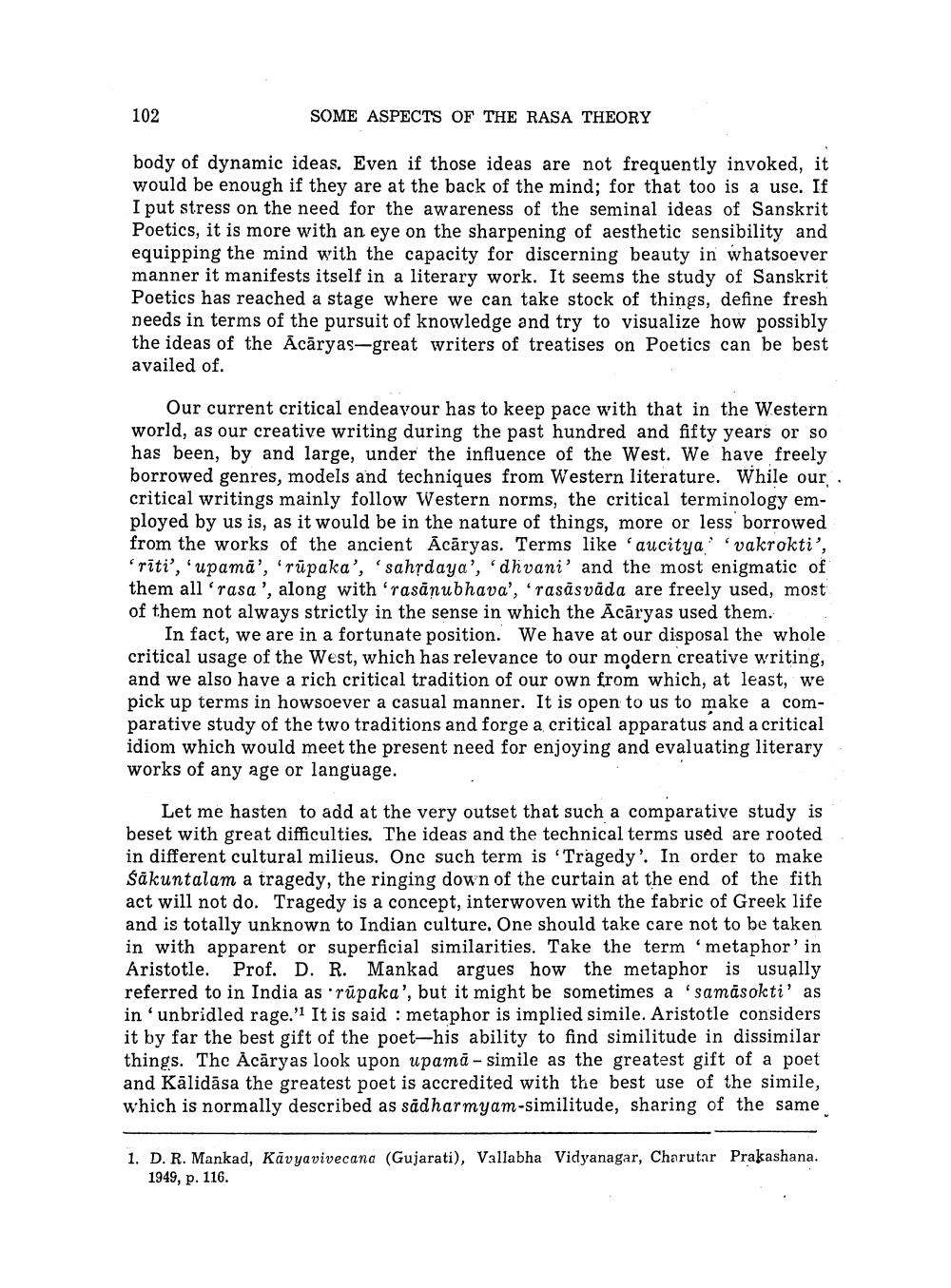________________
102
SOME ASPECTS OF THE RASA THEORY
body of dynamic ideas. Even if those ideas are not frequently invoked, it would be enough if they are at the back of the mind; for that too is a use. If I put stress on the need for the awareness of the seminal ideas of Sanskrit Poetics, it is more with an eye on the sharpening of aesthetic sensibility and equipping the mind with the capacity for discerning beauty in whatsoever manner it manifests itself in a literary work. It seems the study of Sanskrit Poetics has reached a stage where we can take stock of things, define fresh needs in terms of the pursuit of knowledge and try to visualize how possibly the ideas of the Ācāryas-great writers of treatises on Poetics can be best availed of.
Our current critical endeavour has to keep pace with that in the Western world, as our creative writing during the past hundred and fifty years or so has been, by and large, under the influence of the West. We have freely borrowed genres, models and techniques from Western literature. While our critical writings mainly follow Western norms, the critical terminology employed by us is, as it would be in the nature of things, more or less borrowed from the works of the ancient Acāryas. Terms like 'aucitya 'vakrokti',
rīti', 'upamā', 'rūpaka', 'sahşdaya', 'dhvani' and the most enigmatic of them all 'rasa', along with 'rasānubhava', 'rasāsvāda are freely used, most of them not always strictly in the sense in which the Ācāryas used them.
In fact, we are in a fortunate position. We have at our disposal the whole critical usage of the West, which has relevance to our modern creative writing, and we also have a rich critical tradition of our own from which, at least, we pick up terms in howsoever a casual manner. It is open to us to make a comparative study of the two traditions and forge a critical apparatus and a critical idiom which would meet the present need for enjoying and evaluating literary works of any age or language.
Let me hasten to add at the very outset that such a comparative study is beset with great difficulties. The ideas and the technical terms used are rooted in different cultural milieus. One such term is Tragedy. In order to make Śakuntalam a tragedy, the ringing down of the curtain at the end of the fith act will not do. Tragedy is a concept, interwoven with the fabric of Greek life and is totally unknown to Indian culture. One should take care not to be taken in with apparent or superficial similarities. Take the term 'metaphor'in Aristotle. Prof. D. R. Mankad argues how the metaphor is usually referred to in India as rūpaka', but it might be sometimes a 'samāsokti' as in unbridled rage.'1 It is said : metaphor is implied simile. Aristotle considers it by far the best gift of the poet-his ability to find similitude in dissimilar things. The Acāryas look upon upamā - simile as the greatest gift of a poet and Kālidāsa the greatest poet is accredited with the best use of the simile, which is normally described as sādharmyam-similitude, sharing of the same
1. D. R. Mankad, Kavyavivecana (Gujarati), Vallabha Vidyanagar, Charutar Prakashana.
1949, p. 116.




